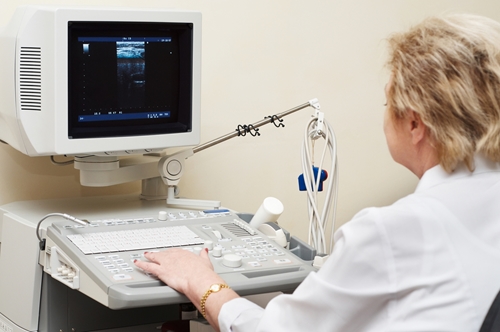One of the most frustrating things for a business user to have to contend with is an unresponsive computer or application. For many organizations, including members of the healthcare industry, a sluggish software program could lead to costly delays that may impede operations. Typically, individuals tend to blame their computer's processor or RAM for any perceived performance drops, but the culprit could be lurking within their storage device. Many businesses opt to use magnetic-based platforms such as hard disk drives for most – if not all – of their data storage needs. HDDs can supply a large amount of storage space at a relatively low price, making them extremely popular with a wide swath of consumers and business users. However, this technology also has some fundamental performance issues that could prove to be extremely problematic.
HDDs and other magnetic-based storage devices are limited by the structure of their internal components. In order to copy, store and access data files, this equipment uses read/write heads to interact with the magnetic spinning platter. The physical limitations of these internal parts can result in significant lag times as users wait for the read/write heads to move into position. Although HDDs with faster RPMs can alleviate these problems to some extent, this technology will never be able to offer immediate program or application launches.
SSDs on the rise
According to Forbes contributor Tom Coughlin, the performance benefits of solid state drives have led more businesses to consider either replacing or supplementing their traditional HDD storage devices with this high-quality technology. He cited figures from the latest Coughlin Associates Digital Storage Technology Newsletter, stating that performance enterprise HDD shipments remained stagnant during the third quarter of 2013. More organizations are turning to SSD drives to enhance their ability to launch critical applications and programs as quickly as possible. Because these devices run on flash-based memory and are not beholden to the physical limitations of moving parts, they can boot up operating systems and execute software requests in far less time than an HDD.
"Traditional performance enterprise HDDs are being replaced by flash memory or a combination of flash memory and capacity HDDs," Coughlin wrote. He continued, "Using flash memory storage to replace traditional performance HDDs increases the effective average data rate by 10 times or more and this has made SSDs the best choice for many performance enterprise applications."
One of the areas in which SSD technology has clearly demonstrated its value is within embedded systems. Many of today's advanced networks and systems depend on embedded hardware in order to continue operating at a high level. In the healthcare sector, this equipment includes imaging devices and patient monitoring networks. With an embedded flash-based memory drive, this critical hardware will run optimally, offering the reliable performance needed to provide high-quality patient care. It's imperative that medical professionals invest in only the best flash-based solutions available, as their critical systems may not be able to operate properly with a lesser model. DIGISTOR's mSATA SSD devices can be integrated with this hardware to keep them running smoothly and effectively.
Configure flash-based devices for optimal performance
As advanced as SSD solutions are, it's still important that users take the time to properly configure them in order to maximize their output and performance boosts. Computer Weekly contributor Alex D'Anna noted that some individuals have experienced only marginal enhancements with their flash memory upgrades, when they were expecting much more. D'Anna explained that there are a number of potential issues – typically pertaining to legacy equipment – that could adversely affect the operability of a flash-based storage device. Many of these problems are the result of improper configuration on the part of the adopter. Given the complex nature of this technology, it's understandable that non-technical users would have some trouble setting up their hardware to wring the most value out of it.
These difficulties highlight the need for a storage provider that can offer the personalized attention needed to ensure that a new SSD drive runs at its highest capacity. DIGISTOR mSATA solutions can be customized to meet the unique demands of a particular organization. This may include tweaking form factors, increasing durability to withstand extreme temperature fluctuations and configuring internal settings to interact with critical systems. Whatever performance capacity an organization requires out of its SSD devices, DIGISTOR can provide the answer.
A reliable mSATA SSD solution offers massive performance boosts that can remove the strain of running intensive processes from legacy hardware. Because this technology leverages flash-based memory, critical applications can be launched quickly, effectively and reliably. In addition, by transitioning these applications from primary data storage devices, that equipment can be better utilized for other means. When looking to upgrade the storage capabilities of their embedded systems, organizational leaders should ensure that they choose a solution that will provide years of service. DIGISTOR mSATA SSD utilizes advanced wear leveling techniques to prolong the life of its internal components and continue running at an optimal level.


Recent Comments